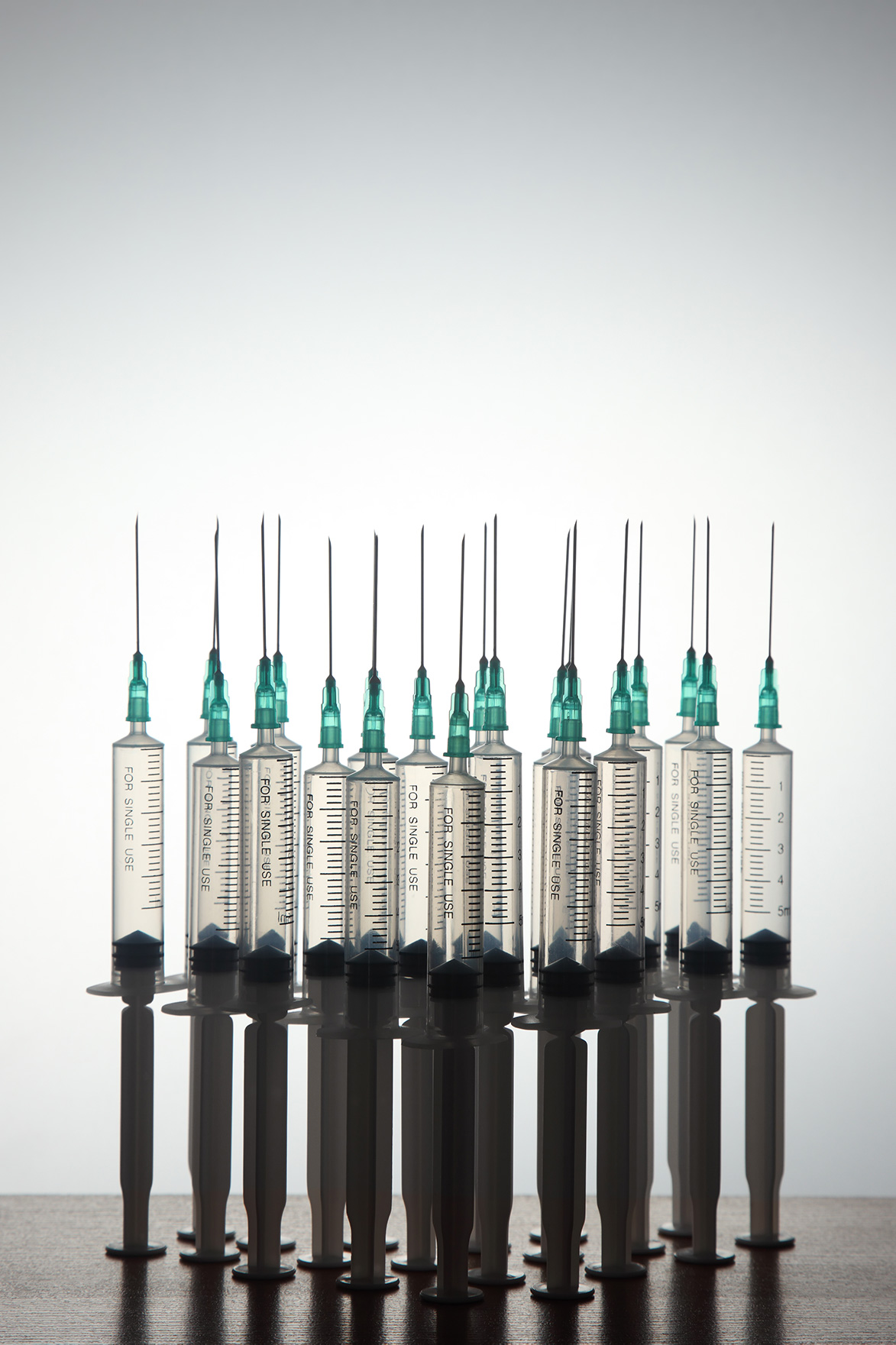Last fall, all roads led to Paris, where the rock stars of the posterior segment subspecialty convened to discuss the latest trends – not in fashion, but in the management of retinal diseases. Below is a brief summary of the most notable presentations from experts across the globe at EURETINA 2019 in Paris . . .
Diabetic eyes: Who cares about OCT-A anyway?
In diabetic retinopathy (DR), the evaluation of retinal vascular changes such as FAZ enlargement, capillary abnormalities and neovascularization is central to diagnosis, management, treatment monitoring and prognosis. During his presentation, Dr. Francesco Bandello, professor and chairman, Department of Ophthalmology, University Vita-Salute, Ospedale San Raffaele of Milan, Italy, highlighted the emerging relevance of OCT-A in patients with retinal changes in diabetes. He explained that OCT-A is useful in evaluating macular ischemia and has shown excellent results in delineating micro infarction of surrounding vascular arcades and FAZ area, which strongly correlates with visual acuity.
“Several studies have shown that OCT-A provides better assessment of macular ischemia than fluorescent angiography. It is also a vital tool in screening patients with diabetes and no retinopathy, shown by subtle OCT-A alterations present in diabetic patients with no retinopathy,” said Dr. Bandello. Furthermore, Dr. Bandello discussed data from studies which showed that quantitative OCT-A metrics strongly correlate with severity of retinal changes in patients with diabetes mellitus.
“OCT-A provides useful information in diabetic retinopathy screening, macular ischemia evaluation and risk stratification. However, its use in clinical practice remains limited due to artifacts, wide variations in patients and lack of consensus on quantitative metrics,” he summarized.
The diabetic retina: When AI takes the wheel
“Machine learning algorithms are able to identify, localize and quantify pathological features in almost every macular and retinal disease,” Dr. Ursula Schmidt-Erfurth, professor and chair of the Department of Ophthalmology at the University Eye Hospital, Vienna, Austria, told conference delegates. Indeed, new advanced diagnostic technologies are expanding the frontiers of our understanding of the pathophysiology of the retina.
“Digital images providing millions of morphological datasets can be rapidly analyzed using artificial intelligence and methods based on machine learning and deep learning,” she added.
In supervised machine learning, the intricate pathways of the human brain that recognize objects can be mimicked by convolutional neural networks through learning of distinct pathological features from training sets, while extrapolation from independent pattern recognition can help fine tune machine learning independently.
Artificial intelligence (AI) could potentially enhance retinal disease screening, diagnostic grading as well as guidance of therapy with automated detection of disease activity, recurrences, quantification of therapeutic effects and identification of relevant targets for novel therapeutic approaches.
According to Dr. Schmidt-Erfurth, fully automated AI-based systems have recently been approved for screening of diabetic retinopathy. “In 2018, we witnessed the first FDA clearance of an autonomous AI based diagnostic system, to automatically detect more-than-mild diabetic retinopathy (mtmDR),” she said. Furthermore, several studies have demonstrated that AI is as accurate as or better than the human eye in the analysis of digital fundus images, resulting in EC certifications in the EU as a class II medical device. “Published studies have shown excellent results of the usability of AI in retinal fluid volume quantification in OCT images from patients with diabetic macular edema (DME). AI-based image analysis offers rapid, cost effective, precise, reliable screening and monitoring method for diabetic retinopathy and DME,” reported Dr. Schmidt-Erfurth.
What you should know about the management of DME and PDR in 2019
Treatment of DME has undergone a paradigm shift over the last decade. Anti-VEGF therapy has replaced laser photocoagulation as the mainstay of treatment. “In patients with non-center-involving DME and good visual acuity (VA), the best management strategy is to observe,” said Dr. Sobha Sivaprasad, professor and consultant ophthalmologist, Moorfields Eye Hospital, London, United Kingdom.
A key dilemma faced by retinal surgeons is how to treat patients with center-involved DME whose visual acuity is 20/25 or better. The options available include observation, focal/grid laser (with anti-VEGF if VA reduces) or anti-VEGF treatment alone.
The Protocol V study aimed to resolve this dilemma. In this randomized controlled trial, patients were randomly allocated to the 3 treatment strategies. According to Dr. Sivaprasad, after 2 years of follow-up, 19% of patients in the observation only group had ≥ 5 letter loss, which was similar to 17% in the laser treatment group and 16% in the aflibercept treated group. Therefore, subsequent secondary subgroup analyses may be needed to unravel any differences in the outcome between groups.
What about the DRCR Protocol T? Dr. Sivaprasad narrated that study compared the results of three anti-VEGF drugs: 2.0mg aflibercept, 1.25mg bevacizumab or 0.3mg ranibizumab, in the management of center-involved DME.
After 2 years of follow-up, the data showed superiority of aflibercept over bevacizumab, and not with ranibizumab (which was seen at 1 year), with regards to mean change in VA (ETDRS letters: 18.3 vs 13.3 vs 16.1, respectively) in those who had baseline VA of 20/50 or worse.
However, if the baseline VA was between 20/32 and 20/40, no difference was observed among these three anti-VEGF drugs.
To summarize the treatment options available today for patients with DME, Dr. Sivaprasad said: “In those patients with no visual impairment, observation will suffice. Secondly, with mild visual impairment of between 20/30 to 20/40, any anti-VEGF agent can be used. When DME patients present with VA of 20/50 or worse, aflibercept is recommended.”
For patients with proliferative diabetic retinopathy (PDR), Dr. Sivaprasad highlighted that panretinal photocoagulation remains the standard of care for patients with PDR. Anti-VEGF therapy is also recommended if good surveillance programs are in place to provide rescue therapy.
Patients with center-involved DME with good VA: Don’t rock the boat!
Exciting results from the DRCR Protocol V study: Treatment-naïve patients with good visual acuity (but who have center-involved DME) that are treated by observation can maintain good vision, with outcomes comparable to patients treated with intravitreal injections or laser photocoagulation. These results were presented by Dr. Mathew MacCumber, professor and associate chairman for research, Department of Ophthalmology at Rush University Medical Center in Chicago, Illinois, USA.
Dr. MacCumber and his team demonstrated that there was no significant difference in VA loss at two years of follow-up, regardless of whether the patient was treated with intravitreal drugs (16%), laser photocoagulation (17%) or observation alone (19%). Furthermore, he noted that the percentage of eyes with VA >20/20 was significantly greater with aflibercept than observation, but not laser photocoagulation.
The randomized controlled study enrolled patients with center-involved DME and VA >20/25; 702 participants completed 2-year follow-up. All three management strategies resulted in mean VA at 2 years of 20/20. According to Dr. MacCumber, the proportion of eyes with 20/20 or better was significantly greater with aflibercept (77%) as compared to observation alone (66%).
Also, Dr. MacCumber emphasized that the study did not compare monotherapies, rather it compared three different management strategies. Eyes were followed-up carefully and aflibercept was initiated in the laser and observation groups if vision decreased by 1 line at 2 consecutive visits or 2 or more lines at 1 visit. Changes on OCT did not trigger aflibercept initiation. He explained that the primary outcome of the study, which was loss of 5 or more letters, is likely clinically relevant in eyes with good vision and unlikely due to chance variation.
“Among eyes with center-involved DME and good VA, there were no significant differences in VA loss at 2 years, whether eyes were initially managed with aflibercept, laser photocoagulation or observation, and given aflibercept only if VA worsened. And given the cost and risk associated with interventions, observations without treatment unless VA worsens may be a reasonable strategy in these eyes,” concluded Dr. MacCumber.
In treating patients with macular edema: Do you know your anti-VEGFs?
These are exciting times for ophthalmologists treating patients with macular edema due to central retinal vein occlusion (CRVO). Results of the LEAVO study, presented by Dr. Philip Hykin, consultant ophthalmic surgeon from Moorfields Eye Hospital, London, United Kingdom, provided insights into the cost-effectiveness and efficacy of some of the most popular anti-VEGF treatments for patients.
LEAVO was a phase 3, multicenter, double-masked, randomized, controlled, non-inferiority trial which evaluated the clinical and cost-effectiveness of 3 anti-VEGF treatments over the course of 2 years. Dr. Hykin and colleagues enrolled a total of 463 patients in the study, who were subsequently randomized in a 1:1:1 ratio to receive treatment with aflibercept, bevacizumab or ranibizumab.
Based on the analyzed data from the trial, Dr. Hykin reported that: “Bevacizumab may or may not be worse than ranibizumab or aflibercept. For patients managed as in this study, we would have low confidence in recommending bevacizumab treatment as equivalent to ranibizumab and aflibercept over 100 weeks.”
The primary endpoint measure of the study was change in best corrected visual acuity (BCVA) ETDRS letter score from baseline to 100 weeks in the study eye. Secondary endpoints included proportion of patients gaining 10 or more and 15 or more letters, the proportion of patients losing < 15 or 30 more letters at week 100, change in OCT central subfield thickness (CST) from baseline to week 52 and 100 weeks, the number of injections performed in the study eye at 100 weeks, and local and systemic side effects.
A total of 155 patients were randomized to receive ranibizumab, 154 received aflibercept, and 154 received bevacizumab. Baseline characteristics were similar across all 3 arms of the study. At 100 weeks, the mean gain in BCVA with ranibizumab was 12.5 compared to 15.1 with aflibercept and 9.8 with bevacizumab.
In the intent-to-treat analysis, investigators found bevacizumab was not non-inferior to ranibizumab (95% CI: -1.73 [-6.12, 2.67]). Additionally, investigators noted aflibercept was non-inferior to ranibizumab, but it was not superior either (95% CI: 2.23 [-2.17, 6.13]).
“There were less injections at week 100 among those who received aflibercept (9.8) compared to bevacizumab (11.5) and ranibizumab (11.8),” noted Dr. Hykin.
Shining star: Ranibizumab is a ‘preferred’ treatment option in patients with DME
The effectiveness of ranibizumab in the treatment of diabetic macular edema has been proven with large clinical trials. However, there is paucity of clinical data on the clinical outcomes from a head-to-head comparison of the efficacy of ranibizumab and bevacizumab.
Dr. Reinier Schilgemann, professor of Ocular Angiogenesis in the Faculty of Medicine (University of Amsterdam) and head of the Ocular Angiogenesis Group (University of Amsterdam Academic Medical Centre), the Netherlands, and his colleagues, compared the effectiveness and costs of 1.25mg of bevacizumab to 0.5mg ranibizumab given as monthly intravitreal injections during 6 months in patients with DME.
The study team hypothesized that bevacizumab would be non-inferior to ranibizumab regarding its effectiveness. They conducted a randomized, controlled, double-masked, clinical trial in 246 patients with DME and BCVA of ≥ 24 letters and ≤ 78 in ETDRS charts, and central area thickness on OCT > 325µm.
The primary outcome measure was the change in BCVA in the study eye from baseline to month 6. Secondary outcomes were the proportions of patients with a gain or loss of 15 letters or more or a BCVA of 20/40 or more at 6 months, the change in leakage on fluorescein angiography and the change in foveal thickness by OCT at 6 months, the number of adverse events in 6 months, and the costs per quality adjusted life-year of the 2 treatments. When the team analyzed the primary outcome data, they found that ranibizumab performed significantly better than bevacizumab and the non-inferiority threshold set was not attained.
“Based on our results, the non-inferiority of bevacizumab to ranibizumab cannot be confirmed. Therefore, we show in this study that ranibizumab is better than bevacizumab in the treatment of DME,” concluded Dr. Schlingemann. “In patients with a BCVA of < 20/40 and DME, consider ranibizumab 0.5mg rather than bevacizumab 1.25mg,” he recommended.
Retinal vascular diseases: On the trail of VEGF
Vascular endothelial growth factor (VEGF) and placental growth factor (PGF) modulate vascular permeability, inflammation and neovascularization – and intraocular VEGF and PGF levels are significantly elevated in patients with diabetic eye disease. According to Dr. Aude Ambresin, from RetinElysée, Lausanne, Switzerland, VEGF and PGF act together through VEGF receptors to play a critical role in vascular permeability inflammation and neovascularization. In addition, VEGF and PGF both drive the development of retinal vascular leakage in diabetic eye disease.
Dr. Ambresin explained that evidence exists to suggest an important role for both VEGF and PGF in the breakdown of the blood brain barrier seen in both DR and retinal vein occlusion (RVO). The activation of pro-inflammatory cells in the retina, which mediates chronic inflammatory damage in the retinal pigment epithelium, can be linked directly to the elevated expression of VEGF and PGF; and binding of VEGF and PGF to the VEGF receptor on microglia results in a pro-inflammatory and pro-angiogenic response. Even with complete VEGF blockade by some anti-VEGF agents, PGF would still be available to bind to the VEGF receptor, allowing, for example, further escalation of the inflammatory signals and secondary vascular remodeling in DME. According to Dr. Ambresin, aflibercept represents a unique multi-target agent designed for high-affinity binding to VEGF and PGF. The innovative multi-target trap of aflibercept is the only anti-VEGF that blocks all VEGF receptor-1 ligands, including VEGF and PGF.
“There is convincing evidence to show that aflibercept has a higher VEGF-A binding affinity than all available anti-VEGF agents and its native receptors. For example, aflibercept has a VEGF-A binding affinity 100 times that of ranibizumab,” said Dr. Ambresin.
The high binding affinity of aflibercept has important clinical advantages. “Aflibercept has been shown to have a longer lasting mean VEGF-A suppression; twice as long as that of ranibizumab in patients with neovascular age-related macular degeneration,” shared Dr. Ambresin.
What about patients with impaired retinal perfusion? “Data from the VIVID and VISTA studies have demonstrated that aflibercept specifically targets underlying diseases in patients with DME while improving retinal perfusion. This improvement in retinal perfusion was associated with improvement in the diabetic retina severity score (DRSS),” explained Dr. Ambresin.
DME: Optimized management with intensive, early treatment
The efficacy of aflibercept in DME treatment is supported by evidence from three important clinical trials: the VIVID trial, the VISTA trial and the DRCR Protocol T.
“Early intensive treatment in diabetic macular edema results in rapid and increasing visual acuity gains that can be maintained over time” said Dr. Sobha Sivaprasad, professor and consultant ophthalmologist, Moorfields Eye Hospital, London, United Kingdom.
According to Dr. Sivaprasad, the VIVID and VISTA trials assessed the efficacy of aflibercept in patients with visual impairment due to DME. The study showed rapid clinically significant vision gains that increased with each of 5 initial monthly doses. This vision gain was achieved from the first dose and patients across both studies gained > 9 letters on average (about 2 lines of vision) after 5 monthly loading doses.
Timing is important. The vision changes in the VIVID and VISTA studies were clinically significant and seen with each of 5 initial monthly doses. At week 52, the primary endpoint, patients across both studies gained > 10 letters on average frombaseline. “Patients continued to show improvements in visual and anatomic outcomes after the 4th and 5th monthly doses. The vision gains achieved were sustained over the course of 148 weeks,” said Dr. Sivaprasad.
Early treatment initiation with aflibercept was vital towards treatment success as delayed treatment was associated with suboptimal vision gains in patients with DME.
In the Protocol T study, early intensive treatment with anti-VEGF emerged as an important factor. Early intensive dosing resulted in rapid and increasing visual acuity gains with aflibercept that were superior to ranibizumab at the 12-month primary endpoint. “These unsurpassed gains associated with early intensive treatment were sustained over 2 years, with decreasing dosing,” noted Dr. Sivaprasad.
Overall in the Protocol T study, aflibercept achieved superior VA gains at year 1 and over 2 years compared with ranibizumab or bevacizumab in patients with baseline vision < 69 letters (< 20/40). In addition, staying the course with aflibercept provides robust VA gains even in eyes with a limited early response.
“Sustained VA gains with aflibercept translate into meaningful improvements in vision related quality of life,” Dr. Sivaprasad emphasized.
Aflibercept in the real world
There is a need for real-world experience to complement data from randomized clinical trials (RCTs) and support treatment decisions. Emerging real-world experience is demonstrating the actual effectiveness of aflibercept in treating visual impairment due to DME. The results of ongoing studies evaluating this experience with aflibercept were presented by Dr. Jean Francois Korobelnik, professor of ophthalmology in vitreoretinal surgery and head of the Ophthalmology Department, University Hospital of Bordeaux, France.
The APOLLON study was designed to describe outcomes, monitoring and treatment patterns in treatment naïve or previously treatment patients with DME in routine clinical practice. The study enrolled adult patients with type 1 or type 2 diabetes and DME, who had never received aflibercept.
In summarizing the key learnings from his session, Dr. Korobelnik stressed that “the early intensive aflibercept treatment achieved rapid, clinically significant VA gains from the first dose which increases with each of 5 initial monthly doses in patients with DME”. The unsurpassed VA gains in DME sustained over time required decreasing dosing in patients with VA < 69 letters (< 20-40) as demonstrated by the Protocol T trial and supported international guidelines.
A Cochrane systematic meta-analysis of RCTs at Level 1, evidence-based review of anti-VEGF agents concluded that at 1 year, all efficacy outcomes significantly favored aflibercept over ranibizumab and bevacizumab.
Aflibercept appears well accepted by ophthalmologists judging by data from the ASRT survey, in which majority of them chose aflibercept as their treatment of choice, when costs and payouts are not an issue. “In real-world clinical practice, aflibercept has been shown to achieve outcomes similar to those observed in clinical trials when used as indicated with 5 initial monthly doses,” shared Dr. Korobelnik.
Editor’s Note: The 19th EURETINA Congress (EURETINA 2019) was held from September 5 to 8 in Paris, France. Reporting for this story also took place at EURETINA 2019 Paris.




